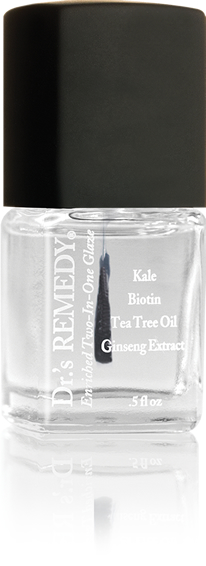Is Nail Fungus Trapped In Your Winter Boots?

Winter means cozy socks and warm boots but with all that snug comfort also comes the risk of unwanted nail fungus. That’s right, according to the Global Nail Fungus Organization, nail fungus is very common.
So, do you think you could have nail fungus? Or, is that thick discoloration on your nail something else entirely. How do you know? Sometimes, it can be hard to tell as there are other conditions that present themselves in similar ways such as psoriasis or yellow nail syndrome. While it’s always best to have your concerns addressed by a podiatrist, there are some things to consider when questioning a potential nail fungus.
Just like with most diseases and infections, some people are more susceptible to contracting a nail fungus than others. Toenail fungus is more likely to affect those with preexisting health conditions. For example, certain diabetic foot problems make it hard to recover from infections. Those with a compromised immune system, and men over 60 are more at risk of contracting a nail fungus. Interestingly, according to the Mayo Clinic, there are times that even with clear signs of infection, you may not need treatment unless there is pain or thickening of the nail
 So if you don’t have a precursor to nail fungus, how does a nail fungus start and what can be done to prevent one? As you get older, your nails tend to dry out and become more brittle, causing cracks in the nail. Just like a cut on your skin, these cuts are vulnerable to fungi, yeasts, and molds that exist in the environment. You can contract a nail fungus from walking barefoot in places like the gym, public pools and locker room. Fungal infections can also be passed through manicure tools that haven’t been properly sanitized by the nail salon.
So if you don’t have a precursor to nail fungus, how does a nail fungus start and what can be done to prevent one? As you get older, your nails tend to dry out and become more brittle, causing cracks in the nail. Just like a cut on your skin, these cuts are vulnerable to fungi, yeasts, and molds that exist in the environment. You can contract a nail fungus from walking barefoot in places like the gym, public pools and locker room. Fungal infections can also be passed through manicure tools that haven’t been properly sanitized by the nail salon.
As winter approaches, it is important to keep in mind that fungi thrive in dark, moist environments: snow boots, UGGs, even sweaty damp slippers. Your warmest socks and shoes often provide little ventilation and can make your feet sweat. It is recommended that you change your socks throughout the day and rotate between different pairs of boots throughout the week, allowing them to dry completely. “If you have a problem with excessive sweating and your socks tend to be drenched halfway through the day, have a clean pair on your person to switch into”, recommends Mark Gasparini, D.P.M. The same principles apply if you were to step in a puddle or walk through the snow. If the water gets into your shoes and is trapped against the skin for a long period of time, a toenail fungus can start to develop. It is important to keep your feet clean and dry.
 While it's still cold out, some prefer to forgo nail polish with darker hues, ‘it’s a good idea to give your nails a break from nail polish for a couple of weeks’, says Dr Gregory Alvarez, DPM. Dark and heavy polishes, in particular, block light, creating a great space for fungus to grow. Instead, opt for a clear all-in-one polish such as TOTAL Two-in-One which contains naturally occurring anti-fungal/antibacterial properties in addition to biotin, cactus, ginseng and kale extracts for strength.
While it's still cold out, some prefer to forgo nail polish with darker hues, ‘it’s a good idea to give your nails a break from nail polish for a couple of weeks’, says Dr Gregory Alvarez, DPM. Dark and heavy polishes, in particular, block light, creating a great space for fungus to grow. Instead, opt for a clear all-in-one polish such as TOTAL Two-in-One which contains naturally occurring anti-fungal/antibacterial properties in addition to biotin, cactus, ginseng and kale extracts for strength.
When you do resume wearing shaded polish during the winter months, choose Enriched Nail Polishes which help combat nail fungus from forming. Dr.’s REMEDY is infused with such additives like tea tree oil, garlic bulb extract and lavender all known antifungal properties designed to keep your nails healthy.
Also, it’s important to stay vigilant when it comes to checking your nails. Your nails can indicate a lot about your health and can be the first to show signs of certain conditions. In fact 12 disease signs can be found on the fingernails.
Oftentimes, the fungus starts as a small spot under the nails and is easier to treat at this stage. Here are a few common nail fungus symptoms:
- Thickened
 Whitish to yellow-brown discoloration
Whitish to yellow-brown discoloration- Brittle, crumbly or raggedDistorted in shape
- A dark color, caused by debris building up under your nail
- Smelling slightly foul
Usually the entire nail needs to grow out or be removed in order to see the results of any treatment but there are plenty of topical and oral medications that a doctor can prescribe to help kill the fungus as well as laser treatments and antifungal lacquers that are available.
Should you find yourself with a nail fungus, Anti-fungal CARESS Cuticle Oil contains undecylenic acid which not only fights nail fungus but can also help prevent a future infection from forming.